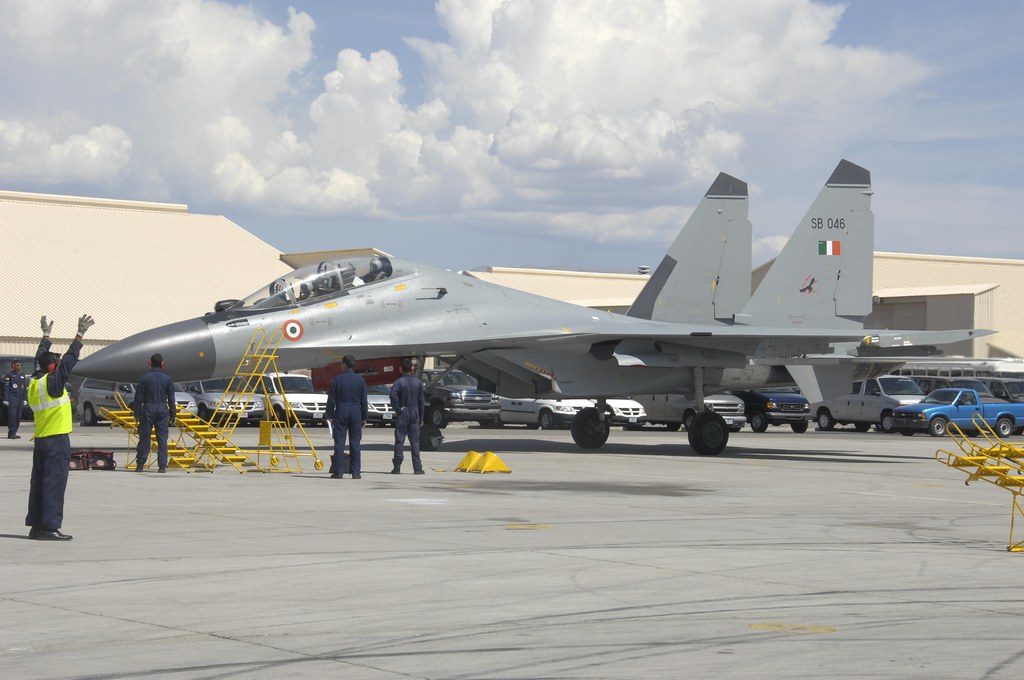
India is about to launch its Super Sukhoi program, as per a statement from the Indian Ministry of Defense. To this end New Delhi has allocated $4 billion. 150 of the 260 operationally ready Su-30MKI fighters will be completely modernized to Super Sukhois.
Around two years ago, the Super Sukhoi program was scheduled to commence. The Pandemic and the. Russian invasion of Ukraine held up the Indian Air Command’s plans. With China continuing to pose a threat, India is preparing to invest in the backbone of its Air Force.
The program will the replacement of electronics, sensors, and weapon systems. These will be the primary focus of the modernization program. If the program is completed on time, India will have a better Su-30 than those available with the original manufacturer in Russia.
The modernization will see the obsolete Soviet N011M Bars radar being replaced by an indigenously developed AESA radar, which is noteworthy.
N011M Bars Radar
The N011M Bars is the first radar from the Bars family, which was founded in the 1980s. The radar has two independently controlled arrays with a peak power output of 4-5 kW.
Russian engineers designed the Bars radar using their experience from the N007 Zaslon. Over the years, Russian engineers have changed the antenna’s design. They have created the N011M Bars multichannel passive electronically scanned array (PESA) antenna from an electronically scanned (phased array).
The scanning capabilities of the N011M Bars are 70 degrees azimuth and 45 degrees elevation. These characteristics, however, are only valid in a fixed position. Realizing that the radar system could be further improved Russian engineers mounted the N011M Bars on an electromechanical drive, reducing the scanning capability to 90 degrees.
During a mission, the N011M Bars have a maximum search range of 400 km. This is not the case, however, with the rear tracking and scanning feature. When tracking a target, the Su-30MKI’s range is cut in half, to 200 km. The radar range is only 60 kilometers when viewed from behind.
The N011M Bars can intercept four air targets by engaging them directly. Radar, on the other hand, can track up to 16 aerial targets at once.
Currently, the radar on the Indian Su-30 can detect ground targets at a range of up to 60 kilometres during air-to-ground missions. Russians engineers have however updated their Su-30MKI years ago and increased the range to 120 km. N011M Bars performs land surface mapping using real beam, Doppler beam, or synthetic aperture radar.
The new radar to be integrated into India’s Su-30MKI is the Uttam AESA radar. It was first displayed in 2019 during an exhibition in India. Indians have been working hard in recent years to improve it. They appear to have already reached the final stage.
The Uttam AESA radar will not only be integrated into India’s Soviet-made Su-30 MKI fighter planes but will also be integrated in the indigenous Tejas fighter jet.
With India planning to develop its own fifth-generation fighter jet, this radar will be integrated into the HAL AMSA project aircraft in a larger and improved version.
The Uttam radar is powered by water-cooled quad-frequency modules. The radar can track 50 targets at a distance of more than 100 kilometers while engaging four targets at the same time. The radar will be able to operate in multiple modes at the same time. It includes an integrated pulse doppler, which improves launch capabilities.
Some of the radar’s new features include high ECM immunity, an ultra-low side-lobe antenna, flexible interfaces, a fast-neam agile system and modular hardware and software, high mission reliability, and IFF modes.




